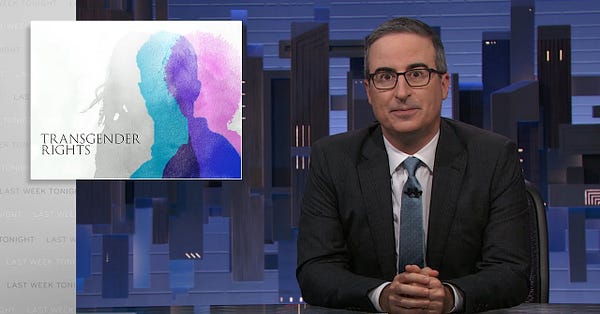E-Pluribus | October 20, 2022
The false promise of affirmative action; Diversity, Equity and Inclusion statements are often either pointless or far too pointed; and is the children and social media panic much ado about nothing?
A round-up of the latest and best writing and musings on the rise of illiberalism in the public discourse:
Andrew Sullivan: The Placebo Of Affirmative Action
The concept of present discrimination to remedy past discrimination has become almost uncontroversial in progressive circles, but Andrew Sullivan argues it’s time for affirmative action to go. Besides the moral problems of punishing individuals simply for being members of certain demographic groups, Sullivan says the stigma attached to those being “helped” isn’t worth whatever benefit there may be from the practice.
And there you have the issue — in the simplest form. In a civilization like America, rooted in the rights and opportunities of the individual, no one really wants to believe they achieved what they achieved simply because they are a member of a group.
It’s a stigma. And this is particularly true for a member of a racial minority — someone who may well have overcome low expectations to succeed in school, worked harder than their peers, triumphed over a tough background or broken family and resisted the easy out of resentment. To do all that and then suffer the indignity of others doubting your right to be at an elite college because of your race must be psychologically excruciating.
And for a country that in the mid-1960s had just abolished its pernicious system of formal race discrimination, it was also excruciating to subsequently erect a new system of formal race discrimination — but this time in reverse. That’s why affirmative action was first described as a temporary evil — rather than an ultimate good.
[ . . . ]
What would happen if the Supreme Court strikes it down? You’d think it would be the dawn of a new Jim Crow, to hear some hysterics. But we already have the case of California, which ended affirmative action in 1998, and we can see what happened. Between then and 2015, a NYT survey found that the Hispanic share of freshmen in the UC system rose from 13 to 36 percent at Irvine, 13 to 24 percent at UCLA, and 17 to 31 percent at Santa Barbara. Berkeley is the least impressive, but even there, without affirmative action, Hispanics went from 9 to 15 percent. Yes, the Hispanic population was also growing fast — but their campus presence was growing in classic immigrant fashion.
[ . . . ]
Above all, these Ivy League performances of “racial equity” are a means of distracting us from the real roots of resilient inequality of African-Americans: single-parent homes, higher rates of poverty and isolation, young lives devastated by crime, poor schooling, overwhelmed, over-worked mothers, and a cultural resistance to learning as a symbol of “acting white.”
Read it all.
Tim Shampling: Empty Platitude, or Litmus Test?
Were Goldilocks to evaluate the Diversity, Equity and Inclusion statements of education institutions, she’d be hard pressed to declare any just right. Writing at City Journal under the pseudonym Tim Shampling, one university professor says DEI statements are usually either so vacuous as to be superfluous, or so alternately overly strident as to be unduly coercive to those expected to sign on to viewpoints they themselves don’t hold.
Universities and departments render free speech a dead letter when they issue substantive DEI statements. Students and faculty will rightly worry about repercussions for running afoul of the opinion announced on behalf of the corporate body to which they belong. Permitting proponents of one side of a question to trade on the prestige of the university’s name tilts the field of debate unfairly. A DEI statement with even the slightest substantive purchase transforms the institution from a true university—a place where all are welcome who can contribute to the discovery and transmission of knowledge—into a sect with lab space.
Defenders of DEI statements cannot help but be stuck on one horn of this dilemma. The statements are too weak to justify implementing or too strong to cohere with the academic mission. Either they are so empty and trivial that building a bureaucracy around them and expending moral and financial capital inserting them into so many aspects of university life constitutes an indefensible waste; or they contain substantive positions, in which case they are instruments for the further marginalization of disfavored viewpoints under the guise of inclusivity. In practice, the latter situation is increasingly the norm in higher education.
Read it all here.
Patricia Patnode: Protecting Children from Social Media Is More Nuanced than It Seems
Conventional wisdom says social media is pretty bad for everyone, but for children, it’s particularly dreadful and even dangerous. Writing at Discourse Magazine, Patricia Patnode rows against the current, suggesting the evidence is largely anecdotal and cannot justify the draconian measure some call for to keep children offline.
Despite the concerns of media pundits and of older generations, there is a major disconnect between the perceived harm of social media and its actual dangers. This is fine, and can even be a little funny, but only as long as the people crafting social media regulations are fully aware of what’s actually happening. Unfortunately, that doesn’t seem to be the case.
Bothersome behaviors and bad manners, such as looking at one’s phone throughout a family meal or consistently getting in trouble at school for having a cell phone out, are not sufficient evidence that social media is causing societal harm. Extremely passionate photographers or readers could disrupt social situations or abstract themselves just as easily as a 13-year-old with an iPhone. Understanding the actual problem is essential to prescribing an effective solution, either through legislation or by tech companies themselves. There are many real issues with social media, such as data privacy, bullying and general safety, particularly for children. But most regulations (both current and proposed) seem to be focused on other, much less serious concerns.
One problem is that social media legislation often deals with the perceived phenomenon of “algorithm addiction,” a popular term that popped up in a (now-dead) California bill that, if enacted, would have made social media companies liable for causing children to become addicted to social media. Such a law would further empower the false narrative that people, and particularly children, lack agency when interacting with algorithms.
Read the whole thing.
Around Twitter
John Oliver created quite a stir with his segment on transgender rights, but his superficial treatment of this serious issue involving children has been met with substantive pushback:




Turns out the NHL has discovered it’s too white:






Professional basketball player Enes Kanter Freedom for the Foundation for Individual Rights & Expression on, appropriately enough, freedom:







